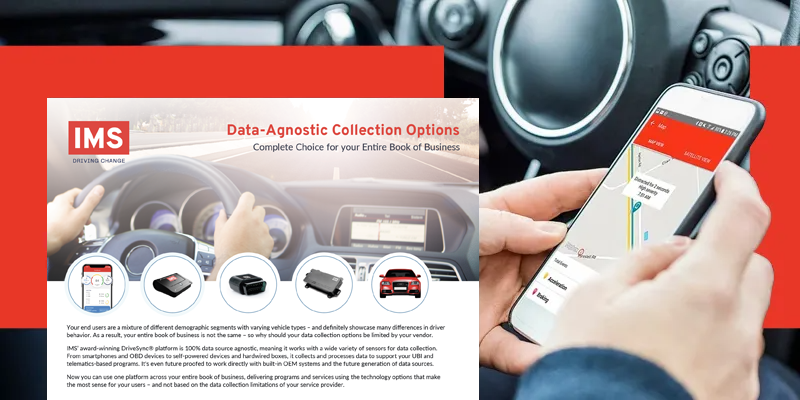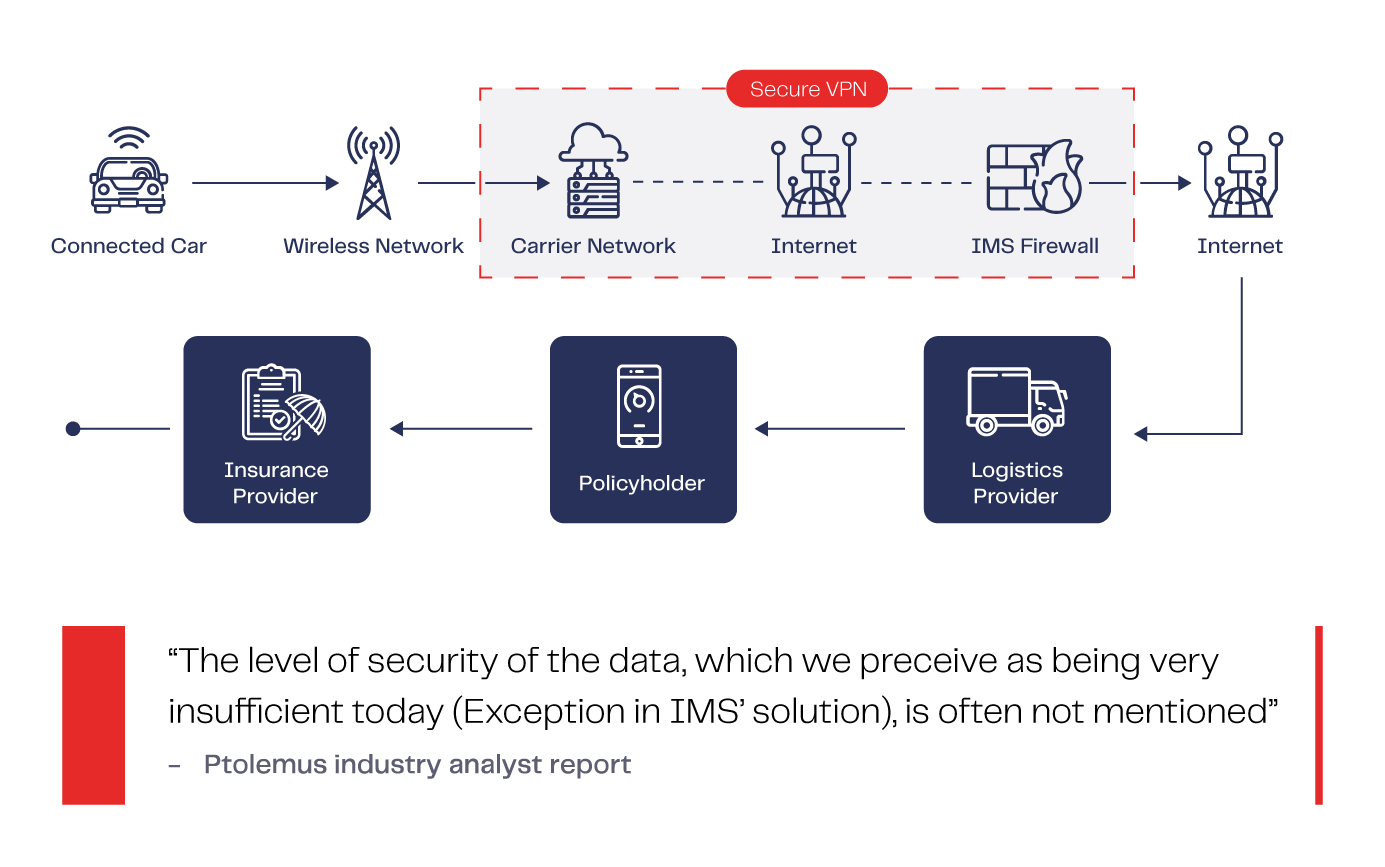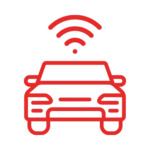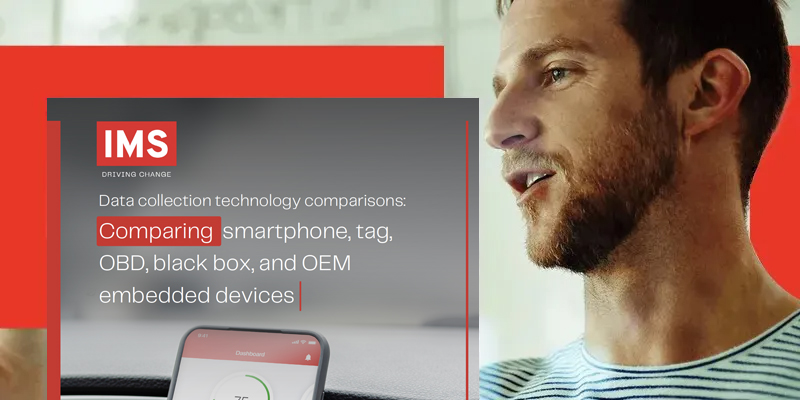
IMS DriveSync® supports many diverse deployment options, providing an agnostic approach to data collection needs. Using the IMS Vehicle Data Exchange as its data source agnostic Ingestion layer, IMS DriveSync® supports data collection from smartphone apps, any aftermarket telematics device as well as the future of OEM data Integrations. Learn more in-depth detail about the platform’s data source agnostic Ingestion layer and data collection capabilities by reading more on the IMS Vehicle Data Exchange.
Our one-stop shop approach allows you to deploy any data source, from smartphone apps, to any aftermarket device and the latest OEM embedded sources:
Data Security - Delivering Full Peace of Mind
IMS DriveSync® delivers a strong IT value proposition that enables IT leaders to confidently deploy connected car services and solutions, and create new revenue streams and programs. The foundation of the IMS DriveSync® platform is based on end-to-end security, integrity of collected data and information availability.
IMS solutions meet strict IT requirements for our customers including:
Our minimum recommended security execution:

Platform Meets Strict Customer Needs:
Addresses stringent requirements for customers, the automotive industry, governments, and end users alike.

Data-Agnostic Collection Options
Your end users are a mixture of different demographic segments with varying vehicle types – and definitely showcase many differences in driver behavior. As a result, your entire book of business is not the same – so why should your data collection options be limited by your vendor.
IMS’ award-winning DriveSync® platform is 100% data source agnostic, meaning it works with a wide variety of sensors for data collection. From smartphones and OBD devices to self-powered devices and hardwired boxes, it collects and processes data to support your UBI and telematics-based programs. It’s even future proofed to work directly with built-in OEM systems and the future generation of data sources.
Now you can use one platform across your entire book of business, delivering programs and services using the technology options that make the most sense for your users – and not based on the data collection limitations of your service provider. As the only true data source agnostic solution on the market, we work closely with you in choosing the right technologies to adopt to ensure you achieve your growth goals, and potential. We make the whole process of a successful launch as simple and easy as possible.
Sensor Overview with Pros & Cons

Smartphone/ SDK Option
Use of mobile as sensor, either through white label app or SDK in 3rd party app
- No-cost deployment and improvements in data integrity make this the most viable option for mainstreaming insurance telematics
- Drives high levels of customer engagement via feedback apps
- Operates completely independently to the vehicle and circumvents intrusion by OEMs
- Can be deployed via bespoke apps or SDK into 3rd-party apps
- More easily ‘game-able’ by the user to mask behaviors without an app misuse solution (Contact IMS for more details)

Self-powered Tag/Beacon
Mounted Bluetooth wireless device tethered to app
- Low cost deployment and known data integrity make this an attractive option from light-touch to mainstream connected propositions
- Has high-fidelity collision detection capture within the device to aid with post collision claims handling
- Easy self install for the customer, and captures journey data even if the mobile is not in the vehicle
- Easy self install for the customer, and captures journey data even if the mobile is not in the vehicle
- No FNOL if the mobile is not in the vehicle at the point of collision
- Battery life is limited to approximately 24 months, and requires replacement for following years

OBD
Dongle plug-in for OBD port
- Only aftermarket device that can access CAN bus data, offering vehicle status data and prognostics
- Ubiquitous in European & North American markets for insurance and fleet
- Ease of self-installation (in some cases)
- No current success in the UK insurance market due to inaccessibility of OBD port
- Lack of consistency of data across vehicle makes/models if not correctly normalized by TSPs platform
- Faces an uncertain long-term future due to OEM threat: European OEMs lobbying to restrict 3rd party access; many ports block data transmission once over 30mph
- End user installation complexity including ease of locating port

Black Box
Installed box
- Standardization of data harvested from the device across all vehicles
- High-fidelity collision detection and robustness of data helps claims remediation and boosts loss ratio performance
- Theft detection and stolen vehicle recovery a key benefit for carriers and mobility operators, and can be positioned as an adoption driver for consumer propositions
- No access to CAN bus data
- Relevance may be limited long-term if OEMs manage to align around useful connected car data standards that are commercially viable
- Not a consumer applicable hardware option for North American market and other regions of the world
- Had additional complexity and expenses including time and effort for professional install of hardware into vehiclePotential

OEM / Connected Car
Direct feed / line fit from on-board computer
- Potential to provide access to embedded sensors and a wealth of additional lines of data analysis, such as ADAS systems
- OEMs are realizing the potential to monetize data for their own and 3rd party provider benefit – insurance is the key use case
- Challenge around standardization of data protocols across all makes/models to make scoring unilaterally applicable as OEMs not agreeing on a standard – requires TSP to solve for with a platform based solution (Contact IMS for more details)
- Uncertainty around timeline for ubiquity, and no clarity around likely cost of data to 3rd parties
- Many manufacturers still concerned about data ownership and privacy
- Challenges around consent management not ubiquitiously being solved for by OEMs










